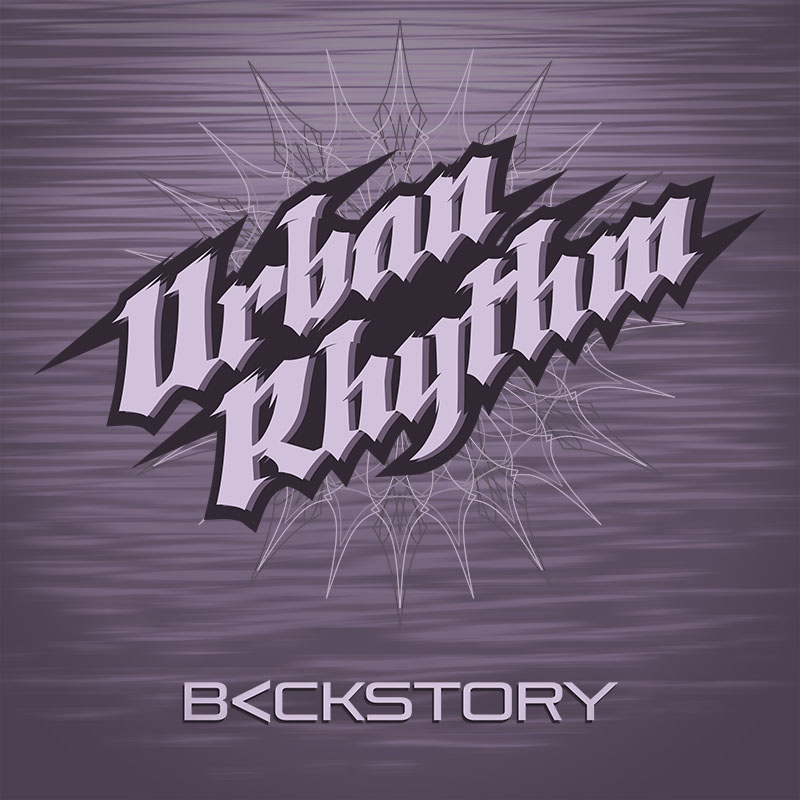The Edge is the second module to debut from Behringer that takes inspiration from the Moog semi modular synth trifecta, consisting of the Mother32, DFAM (Drummer From Another Mother) and the Subharmonicon. The overall synth design and architecture is close enough to Moog’s offerings to throw fuel onto the never-ending Great Behringer Clone Debate, and if you feel strongly about it, you can head over to your favorite music forum and scream into one of many threads that serve as echo chambers for this discourse. For this review, we will compare the two, since we had both in our studio for this review, but won’t delve into the morality of the product.
Comparing the layouts of both units, our reviewers liked the straightforward and simplified layout of the Behringer Edge. Although, it can be housed in a Eurorack, it’s made for the desktop and sits firmly planted. The beefy Velocity and Pitch knobs on the Edge easily trump the Moog’s pencil design, which has created a cottage industry of replacement knobs that fit over the top. Baffling, Moog actually sells a Knurled Knob Kit for the DFAM and Subharmonicon that fit over the “challenged” originals, but they’re expensive and the quality is quite poor (see our Moog Knob Kit For Knurled Pots Review review —Ed.).
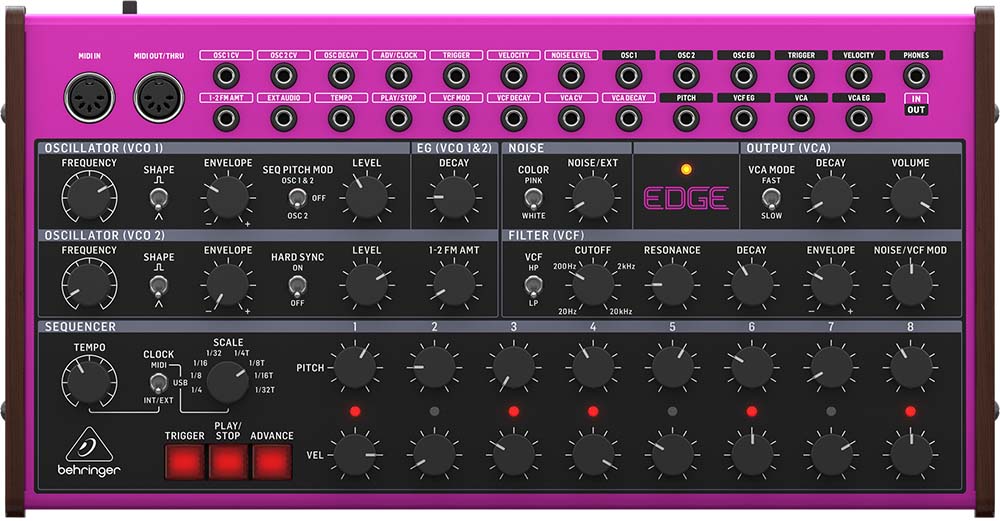

For a limited time only! Up to 80% off all Waves Bundles. PLUS click the banner above or the Go button for an additional 10%! This is Waves best deal yet! Get yours today before this special ends! Go!
The Moog has a nice quarter-inch, mono output on the back, while the Edge has a 3.5 mm minijack output on the front that also serves as the headphone output. The MIDI implementation is far better on the Edge than the Moog with two seamless methodologies for sending MIDI data: traditional DIN Connectors and USB. The 2×12 minijack matrix gives you semi modular control over the majority of the Edge’s analog architecture, and Behringer provides a handful of patch cables to get you started.
Edgier Sound
Where the Moog DFAM and Behringer Edge differ significantly is in the circuit design of the oscillators and filter. Depending on your sonic palette, this can be either a positive or a negative. Behringer’s approach creates a more brittle, harder, dare we say, edgier sound, while the Moog is more rounded and softer. For versatility, this tilts the balance to Moog, since you can always add distortion to the DFAM, while it’s harder to soften the Edge up to Moog’s flavor. That’s not to say you can’t cushion and tamper the output of the Edge with its multimode 24dB ladder filter, but it’s still more angular than the DFAM. Where the Edge reveals the biggest deficit of its filter design is the resonance control. There isn’t much range and it just sounds thin and reedy.
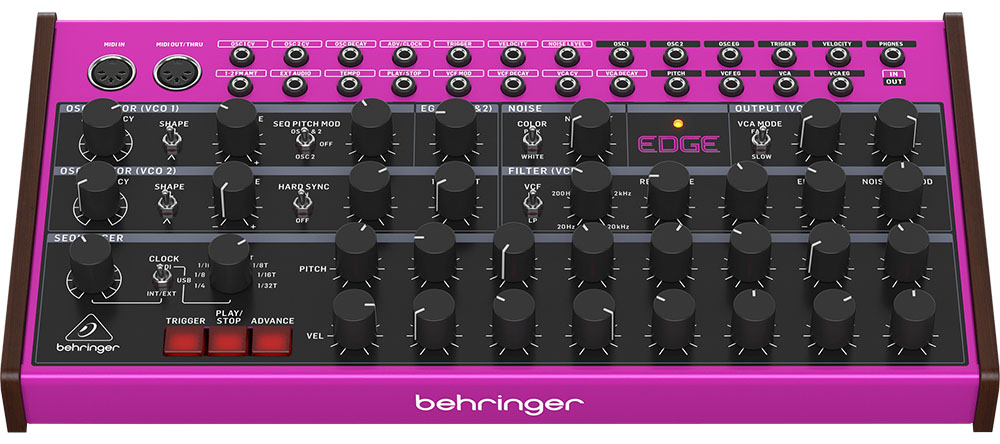
The Behringer Edge’s beefy knobs beg to be tweaked
The Behringer Edge’s two VCO’s can be assigned to either a square or triangle waveform, same as the DFAM. While the Moog has only a white noise generator, Behringer added a pink noise option, providing an additional texture. Behringer also provides FM in a single encoder that adds modulation to both oscillators simultaneously. Another area that Behringer got right is the Edge’s layout; it’s logical, following the signal flow and allows first time users to start creating interesting sounds and rhythms instantaneously.
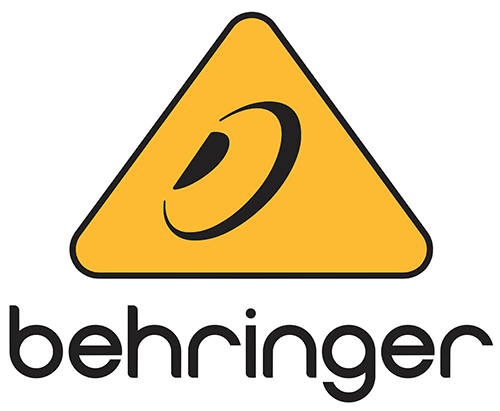
The Edge is a lot of fun to use, and the playful nature of the synth will yield hours of enjoyment.
When the DFAM arrived, the choice to only provide eight steps was a source of debate. Behringer addressed this with the Edge by adding a Scale feature that mathematically sliced the eight steps into different divisions. You have the choice of 1/4, 1/8, 1/16, 1/32, 1/4T, 1/8T, 1/16T, 1/32T (“T” = Triplet. —Ed.) to provide more options. This methodology simply changes the speed of eight steps and doesn’t allow you to chain the eight step sequences together for a more meaningful solution. Worse, our reviewers found the triplet variations to be unmusical. It seems odd that the rhythmic feel could be off, since it’s just an equation, but this was something that each individual evaluator noticed, and something Behringer should look into for a future firmware update.
Urban Rhythm Returns With Defining Album
Urban Rhythm has released Backstory, an exciting new album that demonstrates why he is the King of Acid ‘n’ Bass. Standouts include the huge hit, “Linus & Lucy”, Urban’s cover of the famous Peanuts theme song, as well as “Dead Pixel”. Check out out on all the major streaming platforms below:

Rear view of the Behringer Edge semi modular analog drum synth
Behringer Edge Specifications:
- Semi-Modular Percussion Analog Synthesizer
- 8 x Pitch Knobs, 8 x Vel Knobs, Tempo, Scale, Clock Switch, Trigger Button, Play/Stop Button, Advance Button
- Monophonic with 16-voice Poly Chain
- Oscillators: 2 x VCO
- Waveforms: Pulse / Triangle
- Noise Generator: White / Pink
- Envelope Generator: 3 x Decay
- Sequencer: Dual 8-step
- Analog Outputs: OSC (1, 2, EG), Trigger, Velocity, Pitch, VCF EG, VCA EG
- Headphones: 1 x 1/8″ TRS
- MIDI I/O: In / Out / Thru / USB
- USB B 2.0
- OS Requirements – Mac: OS X 10.14 or later
- OS Requirements – PC: Windows 10 or later
- Power Supply: 12V DC Power Adapter
- Power Usage: 4W Max


The easiest way for electronic musicians to get their music onto Spotify, Apple Music, iTunes, Amazon Music, Tidal, Instagram, Facebook, TikTok, Pandora, Twitch & much more! Click the banner above or the Go Button to save 7% off of your signup! Go!
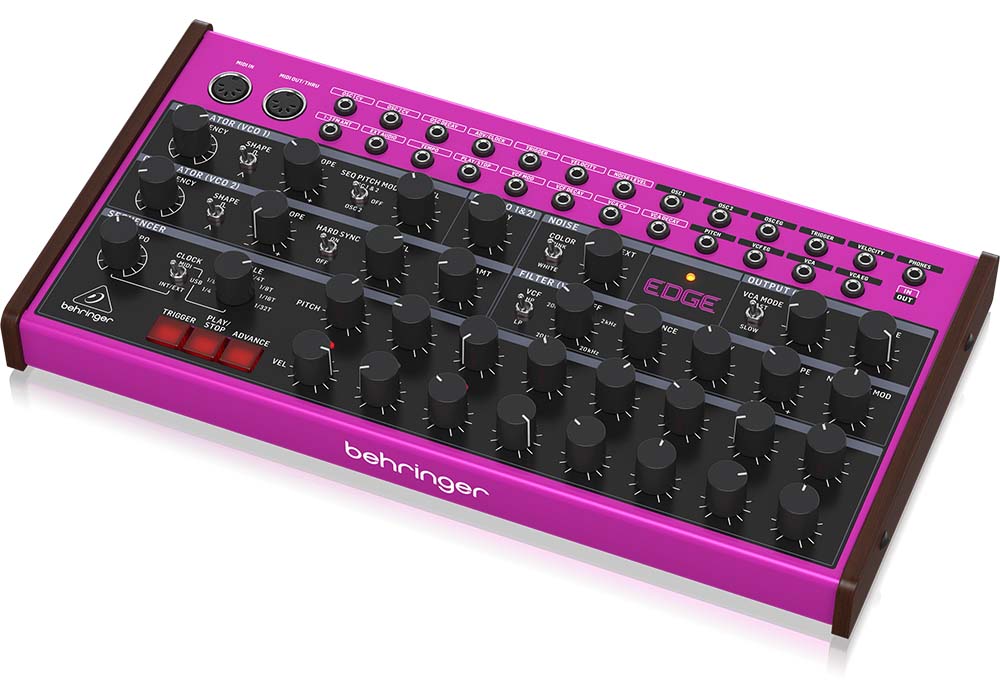
Conclusion
If you were always interested in the Moog Drummer From Another Mother, but didn’t want to spend $600 to determine if it was right for you, the Behringer Edge is certainly worth a look. That said, the Edge could also be a nice complement to your DFAM, if you wanted to add some grit and acerbic tones to your sound. The Edge is a lot of fun to use, and the playful nature of the synth will yield hours of enjoyment. The Edge’s architecture also allows you to create a wide variety of sounds beyond drums and percussion, including acid bass lines and dynamic textures. Recommended.
Behringer Edge Rating: 87%
Cheers:
+ Value
+ Sound Quality
+ Fun & Playful
+ MIDI Implementation
+ Large Knobs
+ Layout
Jeers:
– Minijack Output
– Toggle Switches
– Poor Manual
– Triplet Scale Timing

Behringer’s Edge costs $199 and is available now.
The Future: Addressing the Scale’s triplet timing should be the first order of business, but we’d also like to see Behringer implement Swing/Shuffle functionality into the Edge to give it more groove.

